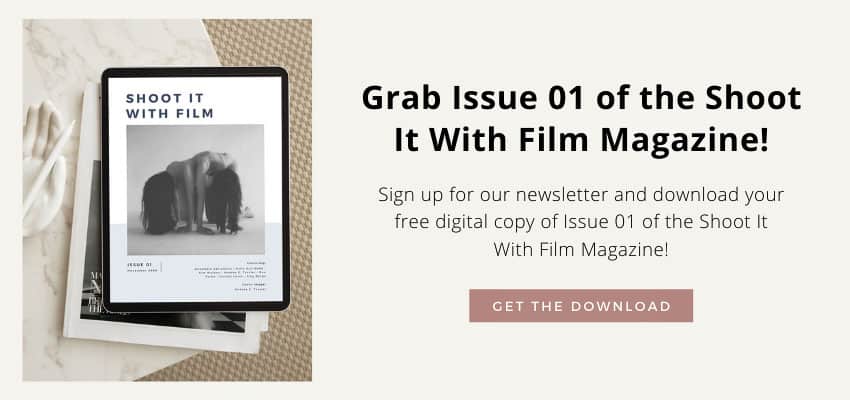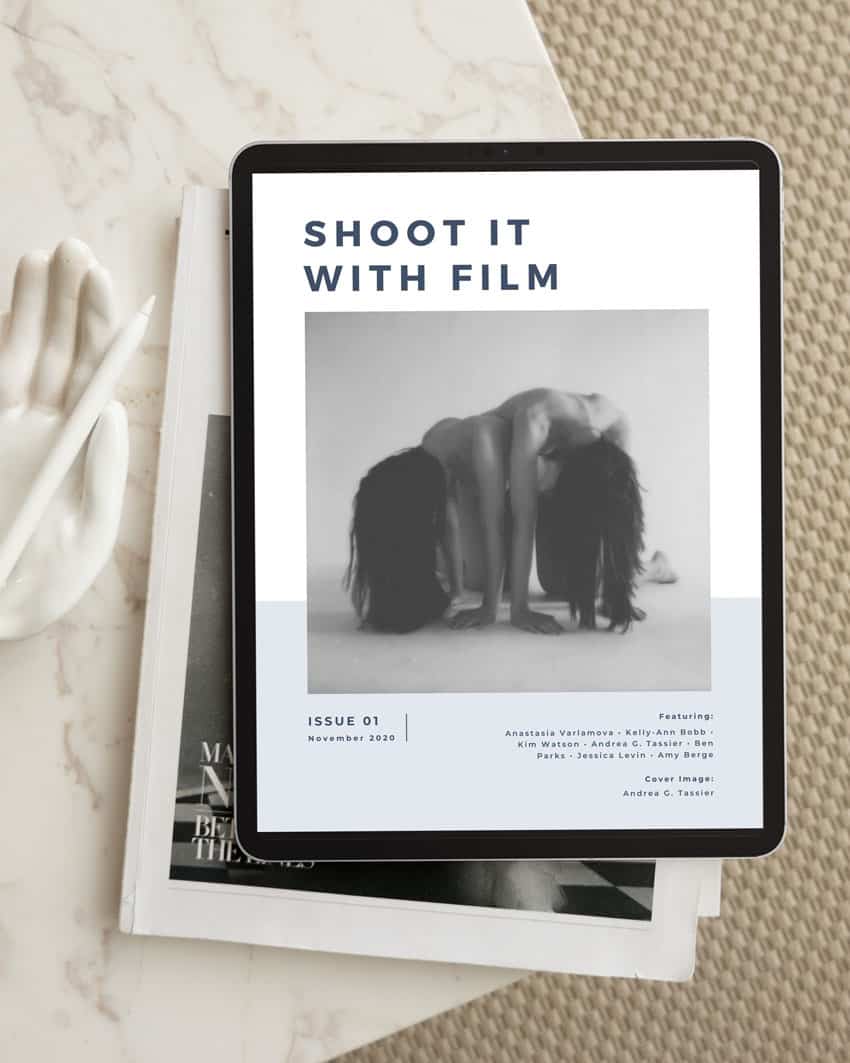
Written by Alicia Bruce
Ask any analog photographer which film they recommend for portraits, and you’re bound to hear the same names over and over again: Kodak Portra 400, Fuji 400H, etc.
But say Ektar and portrait in the same sentence and you’ll be met with the twisted face of a skeptic. Ektar? For portraits?
Ah, but it doesn’t have to be this way! It’s possible to produce beautiful portraits with this saturated, contrasty film stock so long as you take a few things into account.
Find Kodak Ektar 100 in 35mm and 120 on Amazon.





Understanding Kodak Ektar 100 and Skin Tones
Ektar 100 is a color lover’s dream film.
Unlike most other film stocks, Ektar bumps up the saturation a notch while keeping hues mostly true to life (greens can run a little on the blue side, but not in an unrealistic way).
It also saturates some colors more than others – red being one of the more highly saturated hues – which means that whatever undertone you see on a person’s skin in real life, Ektar will make it more apparent.
Red is typically a problem on pale Caucasian skin tones, whereas darker skin tones might take on a more orange hue.
It’s the combination of saturation, contrast, and red tones that make Ektar more difficult to use when photographing people, but not impossible if you know how to work with its strengths.



Metering and Exposing Kodak Ektar
First things first – Kodak Ektar 100 prefers being rated at box speed. Set your ISO to 100 and save the pushing for another film stock.
Like most other films, any amount of underexposure in Ektar will result in muddy shadows and dull contrast, so it’s best to err on the side of overexposure.
However, while Ektar can handle several stops of overexposure in general, the more it’s over exposed the more saturated some colors – like red and orange – can become. This is bad news when we’re talking about portraits of people.

Ektar performs best for portraits if shot at your light meter’s proper exposure or maybe + ⅓ or +⅔ of a stop, but not much higher than a full stop.
Because I avoid portraits in harsh light, I can get away with exposing for minor shadows or darker areas (usually no more than +⅓ – +⅔ stop) to produce a bright and colorful image.


Related: Guide To Choosing A Color Film
Save Ektar for Sunny Days… But Seek Out Open Shade for Portraits
As much as I love shooting with Ektar, I do save it for specific conditions and locations where I know it will perform best.
This film stock loves light, so a bright blue-sky, summery day will allow Ektar to really show off, especially if you’re photographing an aqua blue ocean or colorful architecture.


That said, Ektar is a high-contrast, high-saturation film – two things we don’t often want when photographing people.
As mentioned above, Ektar saturates reds in lighter skin tones and oranges in darker skin tones, and this effect is even more prominent in direct sunlight.

Overcast days should work much better, right?
Not so fast.
Ektar 100 is hungry for light, and on days when the sun isn’t shining bright, you’ll be struggling to expose properly while keeping your shutter speed from being too long for hand held operation.
This often results in an underexposed image with lower contrast, relatively dull colors, and muddy shadows.

So when it comes to making portraits with Ektar, both direct sunlight and overcast conditions are out.
The solution?
Shoot on a sunny day and seek out open shade, an area that’s filled with lots of bright but indirect light.
I like to find colorful walls under an overhang so the subject is lit on three sides but still out of the harsh sunlight.
Even better if there’s a light colored building opposite them to reflect some indirect fill light back onto their faces.




Even Light is the Name of the Game
With nearly any other subject, Ektar can handle overexposure and will continue to produce beautiful colors and a lovely contrast. But as mentioned earlier, when Ektar is overexposed the reds and oranges will continue to saturate, which causes a problem for portraits.
Therefore, the key to getting great portraits with Ektar is to look for even, indirect, bright light.
Shoot tighter if you need to; your goal is to fill your frame with the same type of lighting, negating the need to under or over expose the frame to account for hot spots or shadows.



If you haven’t already figured it out, Ektar 100 can be a wonderful film for bright and colorful portraits if you stick within the confines of its sweet spots.
Box speed, bright, indirect light, and just a tiny bit of overexposure have produced some of my favorite portraits ever. I hope you feel more confident in trying to create colorful portraits on Ektar 100 without fear. Good luck and happy snapping!
All images photographed by Alicia Bruce on 35mm Kodak Ektar100 and a Canon Rebel 2000 35mm film camera. All scans were done on the Noritsu at The Find Lab.
Thank you so much, Alicia! You can find more of Alicia’s work on her website and Instagram.
Let us know any questions you have about shooting portraits on Kodak Ektar 100 below in the comments, and you can pick up some Kodak Ektar in 35mm and 120 on Amazon here.







Blog Comments
Carrie Mcguire
August 10, 2021 at 12:18 pm
FANTASTIC read! I have some in my fridge that I have never used and I think I will take a day trip to shoot some colorful buildings in Palm Springs!
Scott
August 18, 2023 at 3:07 pm
Kodak Ektar film was NEVER designed to be a “portrait” film. That title belongs to their film called Portra.